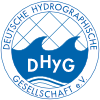HN Ausgaben wählen
- HN 132 (9)
- HN 131 (17)
- HN 130 (10)
- HN 129 (8)
- HN 128 (10)
- HN 127 (6)
- HN 126 (10)
- HN 125 (11)
- HN 124 (8)
- HN 123 (10)
- HN 122 (9)
- HN 121 (10)
- HN 120 (7)
- HN 119 (10)
- HN 118 (7)
- HN 117 (10)
- HN 116 (14)
- HN 115 (10)
- HN 114 (6)
- HN 113 (10)
- HN 112 (7)
- HN 111 (9)
- HN 110 (9)
- HN 109 (11)
- HN 108 (8)
- HN 107 (9)
- HN 106 (7)
- HN 105 (14)
- HN 104 (6)
- HN 103 (11)
- HN 102 (8)
- HN 101 (9)
- HN 100 (13)
- HN 097 (1)
How deep is deep enough? – Anchor penetration tests in the German Bight to optimise burial depth for subsea power cables
»How deep does an anchor penetrate the sea-floor?« This question has been examined by a team of scientists and technicians in Germany. The motivation for this largescale fieldwork was the use of sea cables for shore connections to offshore wind farms in the German Bight. The current regulations prescribe a burial depth of 3 m when sea cables cross shipping channels. The reason for this increase is to guard against the risk factors arising from anchor manoeuvres in emergency and disaster situations. Conversely, implementing a burial depth of 3 m is technically very ambitious as well as being very costintensive.
subsea power cable | grid connection | anchor penetration test | hydrographic survey | German Bight
- Ausgabe: HN 100 Seite: 16–19
- DOI: 10.23784/HN100-03
- Autor/en: Christian Maushake
Extensive sheet pile wall inspection in the Port of Hamburg
In spring 2014 a survey was conducted in the Port of Hamburg to examine the condition of a quay wall. For this purpose Kongsberg Maritime Embient GmbH (KMEMB) introduced a three-stage inspection concept, which provides, according to the current state-of-the-art sonar-techniques, best possible information and analysis of the inspected object, while significantly reducing survey time and costs related to the inspection. On basis of the survey data, a complete picture of the quay wall was created. Several areas of specific interest have been detected, such as bended sheet piles, scouring and distorted steel plates.
quay wall inspection | underwater inspection | MBES | multi-frequency scanning sonar | 3D modelling
- Ausgabe: HN 100 Seite: 12–15
- DOI: 10.23784/HN100-02
- Autor/en: Isabell Mücke
Bathmetry of Lake Constance – State-of-the-art in surveying a large lake
In 2014 the by far largest German lake has been newly surveyed. The transnational project is funded by the European Union and delivers a detailed 3D-model of the lakefloor. The German project name is »Tiefenschärfe – Hochauflösende Vermessung Bodensee«, which in English roughly means: high-resolution survey of Lake Constance. The German term »Tiefenschärfe« (in optics and photography: depth of field) plays with the meanings of »Tiefe« (depth) and »Schärfe« (sharpness). The result of the survey shall be a clear and sharp image of the deep and shallow lakefloor. At present the LiDAR and multibeam data are still processed, but first results are presented in this article.
Lake Constance | Tiefenschärfe | IGKB | lake level | geoid | groundwater intrusions | megaripples | pockmarks
- Ausgabe: HN 100 Seite: 6–11
- DOI: 10.23784/HN100-01
- Autor/en: Martin Wessels, Flavio Anselmetti, Roberto Artuso, Ramona Baran, Gerhard Daut, Alain Geiger, Stefan Gessler, Michael Hilbe, Karin Möst, Berthold Klauser, Steffen Niemann, Robert Roschlaub, Frank Steinbacher, Paul Wintersteller, Ernst Zahn


